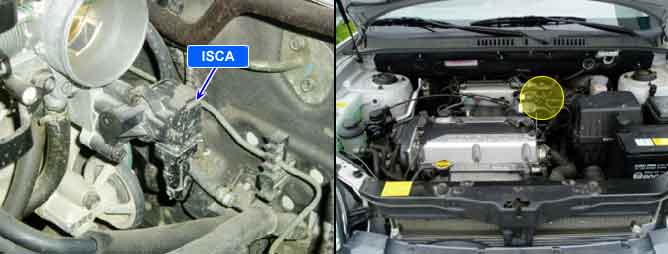

The Idle Speed Control Actuator (ISCA) is installed on the intake manifold and controls the intake airflow that is bypassed around the throttle plate to keep constant engine speed when the throttle valve is closed. The function of the ISCA is to maintain idle speed according to various engine loads and conditions, and also to provide additional air during starting. The ISCA consists of an opening coil, a closing coil, and a permanent magnet. Based on information from various sensors, the PCM controls both coils by grounding their control circuits. According to the control signals from the PCM, the valve rotor rotates to control the by pass airflow into the engine.
If the actual engine speed is higher than the target engine speed at idle, the PCM determines that a fault exists and a DTC is stored.
Item | Detecting Condition | Possible cause |
DTC Strategy | ● Real engine speed & target engine speed are monitored | ● Poor connection ● Intake system or throttle plate for blockage ● Vapor hoses for crack /connection ● Faulty ISCA ● Open or short in ISCA circuit ● Faulty TPS ● Faulty Accelerator cable ● Faulty PCM |
Enable Conditions | ● Engine coolant temperature≥75℃(167℉) | |
Threshold value | ● Real engine speed - Target engine speed > Target + 200rpm | |
Diagnosis Time | ● Continuous |
Application | ISCA Normal Parameter | |
Opening Coil | Closing Coil | |
Resistance | 15~16 Ω | 17~18.2 Ω |